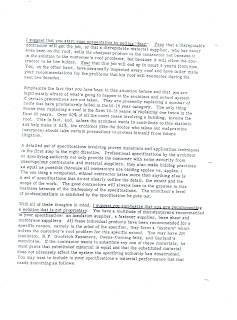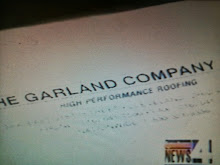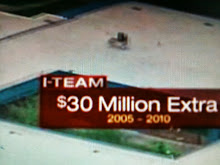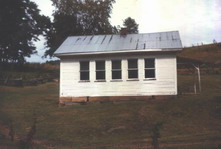Here are the Garland Training Documents - that show clearly their "Business Model":
 See top of page 2:
"The strongest sale will always be Garland materials and performance specficiations and no "or equals".
See top of page 2:
"The strongest sale will always be Garland materials and performance specficiations and no "or equals". And then they state: "Public contracts can be very lucrative, but they require a very dedicated, sophisticated sale; one which anticipates the things that your competitors are going to do prior to the bid opening. If you are not willing to do all of these things, don't do business with schools."
And then they describe some of what we know they do......

Top of page 3:
'I suggest you start your presentation by selling "fear." '
Towards the bottom of page 3:
"I suggest you emphasize that you are recommending a solution that is not proprietary."
Then he tells the Garland sales reps:
1. How to mix up the manufacturers listed - to look "competitive";
2. How to demand that the substitution won't hurt the "system" (although known for substituting J-M plies for their own under their top cap sheet - and not returning the difference...);
2. How to demand that the substitution won't hurt the "system" (although known for substituting J-M plies for their own under their top cap sheet - and not returning the difference...);
3. How to "lock-spec" - by using extreme test listings, not verifiable to a school district guy that it might or might not be accurate...see the next posting to come up in the next couple of days....
But he doesn't tell his sales reps they private label from their competitors - who produce products that the sales reps have been known to decry as not competitive with their own products, and get "disallowed" by school district personnel in so-called "bids."

Here's some of the "restrictive proprietary performance specs" guidelines being taught to Garland sales reps, to "lock-spec" their product in public and school work.
They state that "under no circumstances, are loosely-laid or single-ply systems acceptable."
And they state that 'if you have to go "or equal" "depending upon the intestinal fortitude of the guy you are selling"' to, either "aim for a chance at getting the job - or eliminating as much of the competition as possible."'
 Then he describes how you can lock in the Garland product...with specific lock-spec language, on this last page:
Then he describes how you can lock in the Garland product...with specific lock-spec language, on this last page:
 ______________________________________________
______________________________________________
So, Garland - would you like to explain to the public:
1. The conflicts of interest of a manufacturer having their reps certify without any independent, owner-supplied reps that the roofs were installed correctly.
2. Why you would call a true Maintenance Agreement a "Warranty".
3. How many of those Maintenance Agreements actually got paid for on time and actually got extended, with his public works projects.
4. How many times they redid roofs on all your jobs - you know, the true life of the roofs? Was it 6, 7, 8, 9, 10, 11, or every 12 years?
5. Who private labels their products for you, and which ones? We all know there are only four major US roofing manufacturers. We believe that you have Carlisle private label some of your products, as does Johns Manville for Tremco.
6. When in a so-called "bid" situation when an equal is produced, how many times have you had disqualified products that are the same as yours, only yours are private-labeled?
7. When is the responsible San Francisco Bay Area Garland Rep going to give the Federal Government back all those overcharges for the Johns Manville plies used under their top cap sheet....and charged for as if they were Garland plies, about 3 times or more the price of the J-M plies? Let's see, why don't we start with the US Postal Distribution Service Center just south of the Cow Palace in San Francisco County....and how many schools shall we go pull cores on to find out what you did where?
8. How much did you pay architects to insert your specs into the project bid specs? $10,000 or more? Which architects, for which jobs?
9. How many architects and engineers specifying your products get your $50,000 indemnification for potential problems with the jobs? All of them? It certainly covers most of their deductibles on E&O Insurance Policies - giving them a financial incentive to specify you.
10. And are you aware how bogus it is to list "ASTM D5147" in the actual tests you list in your illegal, restrictive, proprietary specs?
It's a test method - not a test.
ASTM Roofing Committee Members informed me of this particular bogus spec practice - seen in San Francisco Unified School District Specs.
_____________________________________________
_____________________________________________
[Editor's Note: Read Garland's training documents above, and Tremco's training documents, here: http://schoolroofingscam.blogspot.com/2008/02/tremco-in-house-training-documents.html which show both "Business Models" - "Sales Models" - are more concerned about locking out competition -to get their admitted, higher-priced products in to schools.]
Tremco's "business model"predates Garlands', for those who don't know. Tremco executives left to take over a flooring company (Garland) in the early 1970's, to compete with that same business model with Tremco.....
_____________________________________________

























